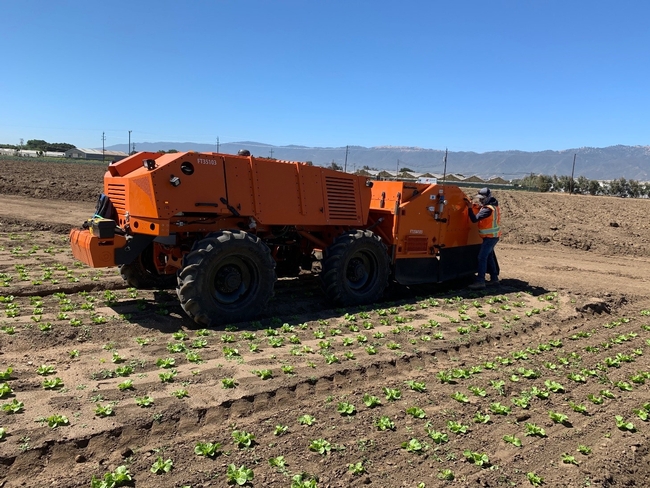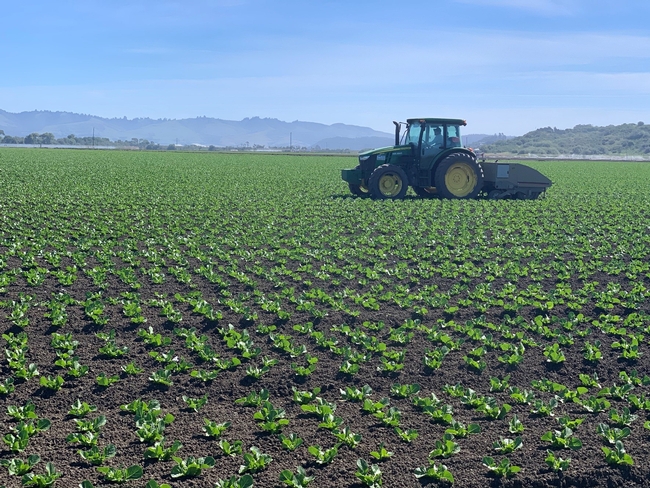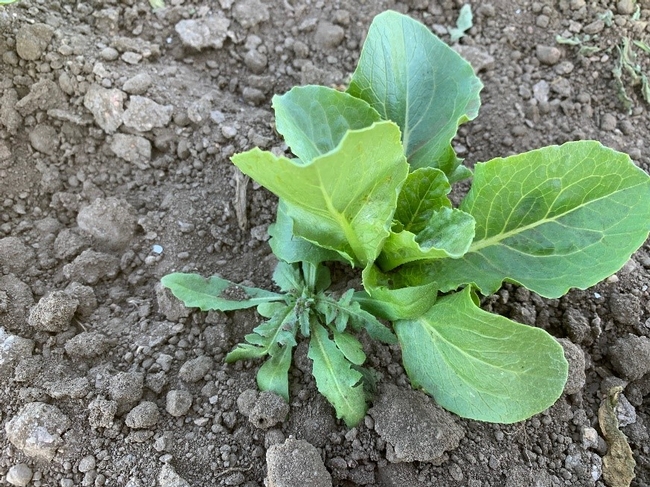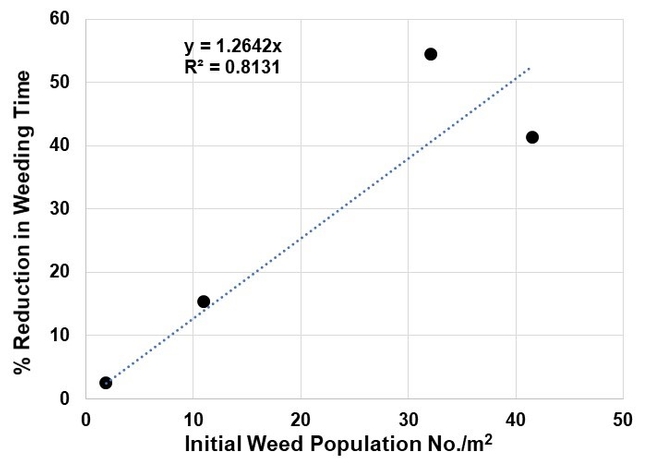Richard Smith is the UC Cooperative Extension Vegetable Crop Production and Weed Science Farm Advisor in Monterey, Santa Cruz and San Benito counties.
Automated weeders remove weeds inside the three- to five-inch-wide uncultivated band left around the seedline by standard cultivation. Automated weeder technology has improved significantly over the past decade. All automated weeders use 1) cameras to detect plants, 2) a computer to process the image and make decisions about which plants to keep and which to remove and 3) a kill mechanism. Kill mechanism that operates in the seedline used by currently available machines are either a split blade that opens around keeper plants and closes between keeper plants, a spinning blade that avoids the keeper plants by placing them in a notch in the blade or a spray application of an herbicide. Autoweeders being used in the lettuce industry include: Robovator (Denmark), Steketee (Netherlands), Ferrari (Italy), Garford (England), Naio (France) and FarmWise, (USA, Photo 1) and Stout (USA, Photo 2). The machines are particularly effective for use with transplanted vegetables because recognizing the difference between the crop and the weeds is easier given the initial size difference between the transplants and germinating weeds.
One key motivating factor to the use of autoweeders is the scarcity of available labor to weed fields, and in that sense, automate weeder technology has arrived at a critical time in the agricultural industry. Clearly automated weeders are useful to growers because they remove weeds, but this technology is currently quite expensive, and growers need to make decisions on when it is economically advantageous to use them. Currently, automated weeders are either purchased by growers or a service company provides autoweeding for a fee. Ideally, auto weeders would remove all the weeds from a field and not require any further follow-up hand weeding. However, this is not always the case because some weeds are missed because they are too close to the crop plants and cannot be removed without risking injury to the crop (Photo 3). In addition, in direct seeded lettuce production which requires thinning the lettuce to the desired stand, double lettuce plants (Photo 4) frequently are left following thinning and must be removed by a subsequent weeding operation.
In lettuce production fields, growers try to remove as many weeds as possible from the field to reduce weed seed production and keep future weeding costs low. As a result, they will normally send in a crew even after using an automated weeder. Using the autoweeder will help to speed up subsequent hand weeding operations (Table 1), but the grower faces a weeding bill from both the hand weeding and autoweeding operation. In Figure 1, we looked at initial weed populations and the impact of autoweeding on subsequent hand weeding time. This data shows that when weed populations are low, autoweeding does not speed up subsequent weeding as much as when initial weed populations are higher.
The most clear-cut scenario for autoweeders is when they remove enough weeds to forego subsequent hand weeding. This can and does happen, even in the intensely managed cool season vegetable production fields. But in cases where subsequent hand weeding or double removal is necessary, autoweeding may add an additional cost, especially in fields that have low weed populations. However, even in cases with low weed populations, growers may be motivated to use autoweeders because they help manage scarce labor resources and facilitate crews to quickly and efficiently complete follow-up weeding operations.





